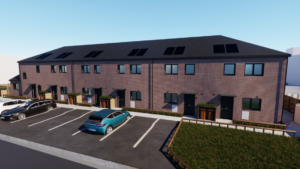Innovating our way out of the housing crisis
Housing, particularly London housing, is getting attention. The front runners in the mayoral race are talking about it as if being able to promise new homes would translate into votes and more pertinently that the mere articulation of that promise would mean new homes flowing from a production line after 2016. I would be delighted to share this optimism. In this context, the launch of New London Architecture’s exhibition of 100 Innovations in Housing is timely. Each campaign can mine the entries for the ideas that fit their preconceptions and those of their core voters.
The coverage of the competition has focused on the beautifully presented master builder ideas, over canals or railways, higher density in suburbs, a new town in the Home Counties. Grand visions are important and should not be discounted. They point out an opportunity to think differently, the give a different perspective on the familiar. It is too easy to be cynical and I for one would be delighted if all the ideas put forward were taken up in one way or another. My fear is that the real ideas in all the great schemes will be lost, buried under all the naysayers, ‘you can’t do thats’ and the sheer grind of making it happen.
As well as the eye-catching presentations from the big beasts of architecture and development there are other ideas that put forward a different perspective. There is a role for the mega scheme, physical transformation on a grand scale, those ideas must not be lost. I think that there is a different perspective possible around what can be done in neighbourhoods, drawing on community knowledge of their places, implanting two or three homes on a scrap of land that adds little to the quality of place.
Other ideas do provide incremental change. My eye was caught by the notion that it may be possible to add one or more floors to existing medium or high rise buildings. This does seem to be a clever way of making best use of the assets we have. Perhaps linking this to a thermal upgrade scheme, that changes the appearance of the building, upgrades to shared areas and improvements to the setting of the homes could restore the original vision of high rise living.
‘No one who works in social housing, despite the hysteria of the press, wants to deny anyone the opportunity to own a home; many would argue that building homes for sale at a discount to the market, or to create subsidy for discounted rents, is a proper thing to do’
The gestation period of a major scheme and then its delivery can span a generation. Perhaps more. During that time there is uncertainty and decay. There is no doubt that there are circumstances where the only solution is a clean slate but this needs to be undertaken in the knowledge that the process will be lengthy and the actual outcomes different to those planned. The consequences for families from this process are difficult, few if any such schemes replace all the socially rented homes there at the beginning. Any new rented homes will be at 80% of the market rent, this could easily be £400 per week in some parts of London. That’s £20,800 a year, just £2,200 less than the London benefit cap or £5,000 more than the new minimum wage for over 25s. Sales prices are no more supportable for people in work. Finding a home for a household on average earnings, close to work and with access to schools or other amenities is impossible.
The costs of major regeneration schemes mean that new homes have to be at a premium to the local market, attract newer and more affluent households, with all the dislocation that causes.
The Right to Buy continues to fester. There is the outrage that councils are renting back homes sold under the Right to Buy at market rents which is compounded because the process of spending the receipts on new provision means that new homes are not being built. No one who works in social housing, despite the hysteria of the press, wants to deny anyone the opportunity to own a home; many would argue that building homes for sale at a discount to the market, or to create subsidy for discounted rents, is a proper thing to do. Selling homes that could otherwise provide an opportunity for another family to save and then buy a home is wrong. There is no inherent moral superiority of owning over renting, though I may be with Nye Bevan on owning someone else’s home.
It seems to me that the idea of small scale infill development, using sites found through a creative and inquisitive process, asking why not put homes here, linked to the use of accumulated Right to Buy receipts, could lead to the delivery of hundreds of new homes across London.
In this I must declare an interest, I contributed one of the 100 shortlisted ideas, but will leave it to those who visit the exhibition to decide which it is.















